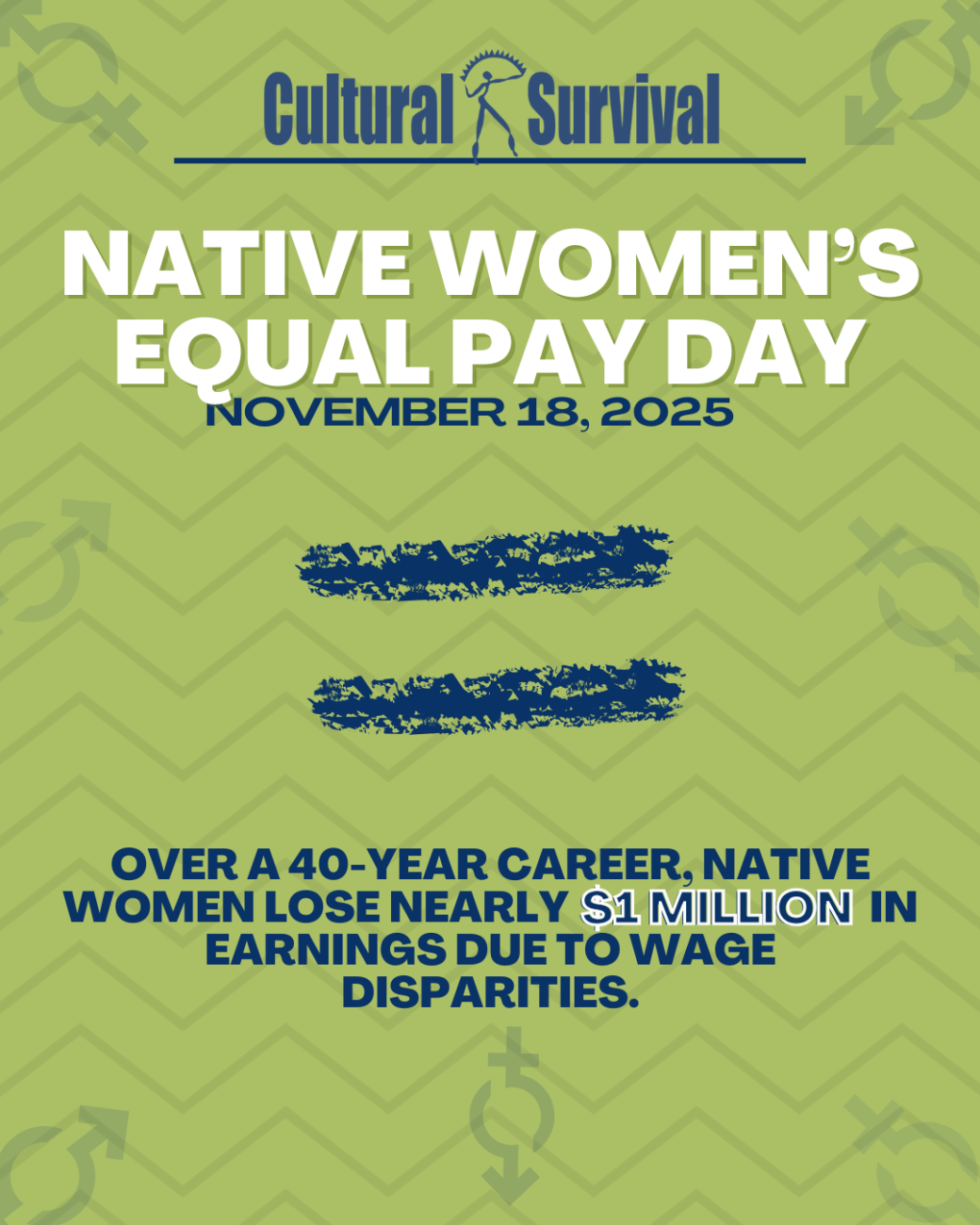
By Tia-Alexi Roberts, Narragansett (CS Staff)
November 18, 2025, marked National Native Women’s Equal Pay Day, serving as a reminder to recommit to economic justice. Pay inequality shapes nearly every aspect of life for Indigenous women, influencing economic stability, sovereignty, and overall community health. The wage gap doesn’t arise from a single cause. It is the result of layered inequities, including workplace discrimination, limited access to high-paying opportunities, and historical policies that have undermined Indigenous economic self-determination.
These disparities have real and lasting effects: restricted access to stable housing, reduced financial security, and fewer educational pathways for both women and their families. Native women continue to face disproportionate wage disparities. They are robbed of nearly $1 million in lifetime earnings due to systemic inequities that restrict them to just 58 cents for every dollar paid to white non-Indigenous men. This injustice affects not only Native women but entire Indigenous communities.
Wage Gap and Lifetime Impact
In addition to earning just 58 cents on the dollar, Indigenous women face one of the most significant wage gaps in the United States, with Native Hawaiian and Pacific Islander women earning only 66 cents for every dollar paid to white, non-Indigenous men. The gap remains severe and ongoing, and is not marginal by any means.
Over a 40-year career, Native women lose nearly $1 million in earnings due to wage disparities. This impacts retirement security, cultural and community responsibilities, the ability to support children, health care access, and housing stability. This loss compounds across families and has an everlasting intergenerational impact.
It is clear that systemic factors such as occupational segregation, lack of pay transparency, discrimination, and barriers to high-paying jobs drive economic distress. The wage gap is not accidental; it is the result of systemic failure.
Research reveals a clear “motherhood penalty”: women with children are less likely to be hired and tend to receive lower pay and fewer promotional opportunities. Native women are also receiving fewer hours while taking on a “second shift” of unpaid work that women regularly perform at home. On average, women spend 10.8 hours per week on unpaid housework than men.
What We Can Do
Native women continue to be the primary caregivers, culture bearers, and knowledge keepers. Their economic instability is everyone’s financial instability, leaving entire communities undersupported. By thinking critically about these issues and taking action to address them, we support not only Native women but also Indigenous communities and youth. To support Indigenous families, we can:
-
Support Indigenous women-owned businesses.
-
Donate to Native women-led organizations.
-
Support Indigenous creators, artisans, and entrepreneurs (join us at our upcoming Cultural Survival Bazaars to support Native women-owned businesses and keep an eye out on our social media!)
-
Support Native-led economic development programs.
-
Advocate for tribal economic sovereignty and Native woman leadership in business and policy.



